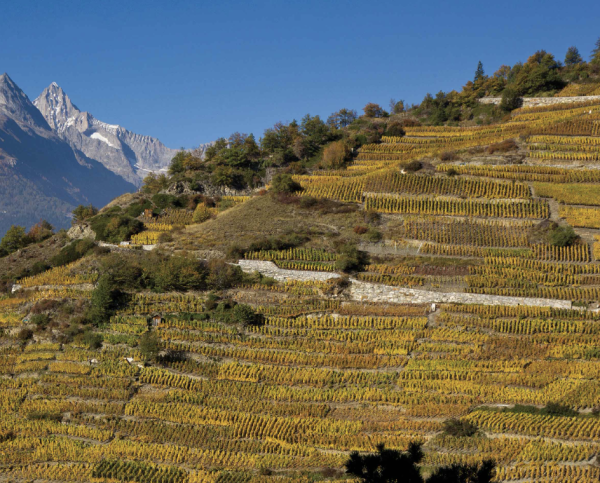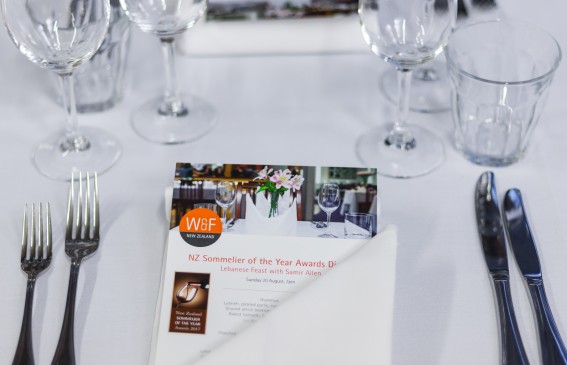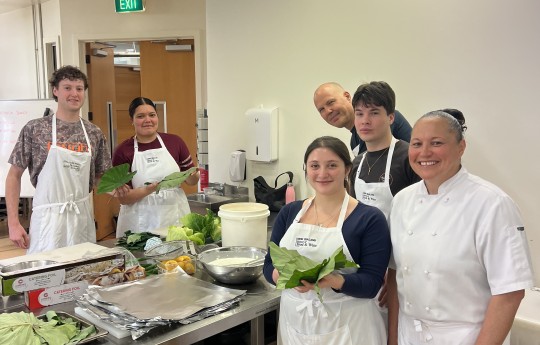Swiss Wines with Franck Laruelle

From the sun-drenched vineyards of the Valais, to the terraced slopes of Lavaux Lake Geneva and the cool alpine valleys of Graubünden, each wine growing region of Switzerland offers its own distinctive character and charm.
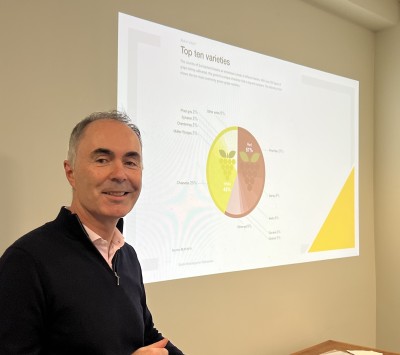
Franck Laruelle, Hospitality tutor at the New Zealand School of Food and Wine since 2017, spent many years teaching in Switzerland at the highly-respected Glion Institute of Hospitality Management. Over these years, Franck explored the Swiss wine regions and developed a deep knowledge of these distinctive wines.
Following his trip back to Switzerland in 2023 and Franck's willing friends who transported wines in their luggage to New Zealand, Franck was shared six wines to explain more about Swiss Wine.
Switzerland has around 15,000 hectares of grape vines, 6 regions and 252 different grape varieties. Retrieved Swiss Wine 10 July 2024
- Three Lakes 6% 930 HA, along the eastern border with France
- Ticino 8%, 1100 HA, on Italian border near Lake Maggiore, 80% Merlot, hot, sunny,
- Geneva 9% 1410 HA, around the lake and city of Geneva, more international grape varieties
- German Switzerland 18% 2650 HA, north, 16 AOCs, Pinot Noir and Muttler-Thurgau are dominant.
- Vaud 26%, 3775 HA, north of Lake Geneva, includes Lavaux, home of Chasselas, has 6 AOCs and 2 grand cru AOCs
- Valais 33%, 4850 HA most southern region, north of Italy, source of the Rhone River
Only 1% of Swiss wine is exported.
Grape Varieties
The grape varieties are listed in three families.
Indigenous or Native grapes: traditional grape varieties that have a close and often exclusive link with Switzerland for example Chasselas (Fendant).
Imported grapes: grapes well-established in Swiss vineyards for example Pinot Noir, Gamay or Merlot.
Created grapes: crosses of Vitis vinifera created in plant nursery for example Muller Thurgau (also widely planted in NZ until the 1980s), a crossing of Riesling × Madeleine Royale.
Gamaret created in 1970 and now the fourth red grape variety in Switzerland. This is a crossing between Gamay and the white grape, Reichensteiner (itself a crossing of Müller-Thurgau, Madeleine Angevine x Calabreser Froehlich created in Germany, 1939). Read more here.

Chasselas is a very old grape variety originating in the Lake Geneva and known as Fendant in Valais. Chasselas is the iconic grape in Switzerland and in many regions is vinified to age.
We were excited to taste Dezaley Les Gradins Domaine Fonjallaz 2021, AOC Grand Cru. This wine showed ripe apricot and nectarine aromas with balanced acidity.

Petite Arvine (w) is a famous white grape of Valais and was already mentioned in 1602 however recent DNA tests have found that it has no parents. This grape variety is an orphan!
Cave de l’Orlaya Petite Arvine de Fully 2022, AOC Valais showed ripe peaches, apricots and fennel, crushed herb notes, light floral, white flower aromas with high alcohol (over 14%) and firm acidity. This was the most popular wine of the tasting.
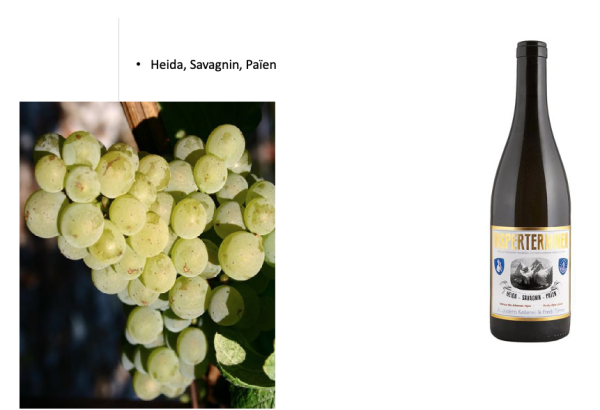
Savagnin (Blanc) is a very old grape variety, also known as Traminer and Heida and has produced many natural offspring grapes including Sylvaner (Johannisberg in Valais), Chenin Blanc, Sauvignon Blanc, Grüner Veltliner. It is also the most celebrated grape of the Jura region of France.
Visperterminen, St Jodern Kellerei & Torres Savagnin (Traminer) 2020 is from a vineyard located at 1100 metres, on the slopes of the Heidadorf and made by a cooperative with 500 members. The vineyards are high and spectacularly steep! Suprisingly the wine was golden in colour with tropical notes of pineapple, honey, ripe peaches and nectarines, lemon zest and 15% alcohol.

Cornalin (r) traditionally called Rouge du Pays. This old Valais grape variety was renamed Cornalin in 1972, borrowing the name from the Aosta Valley. Germanier Cave du Tunnel Cornalin (Rouge du Pays) 2020 showed crushed ripe, red berries and mild tannins, good acidity.
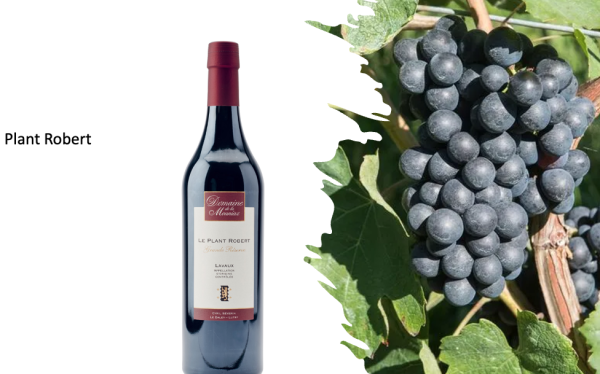
Plant Robert (r) is only grown in Lavaux and was saved from extinction. Domain du Daley Domain de la Mouniaz, Le Plant Robert Reserve 2021 14.5% is from Grand Cru d’Epesses, Lavaux AOC. This wine showed ripe plums and cherries, good acidity and medium tannins.

Gamaret (r), is a cross between Gamay and Reichensteiner, created in 1970 and now the fourth red grape variety in Switzerland. Domaine de la Comtesse Eldegarde Gamaret 2008, aged for 16 years, showed tertiary elements of age, earthy, game, bacon even coffee with a layer of spiced black plums, cinnamon.This wine is very highly regarded, and Franck commented that the wine is only sold to private clients of the winery.
Many thanks, Franck. This was a fascinating class and to taste wines rarely seen in New Zealand.
Celia Hay, 2024
View the official website for Swiss Wine.



